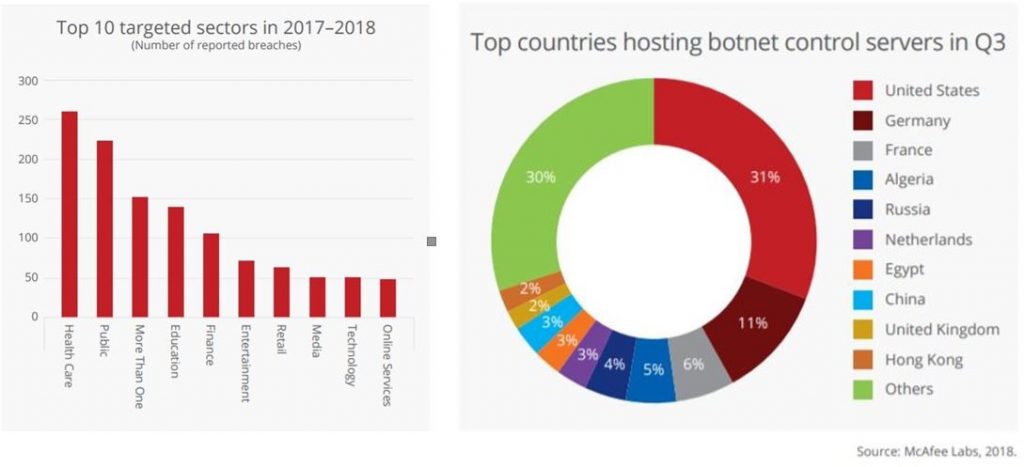- December 25, 2018
- Posted by: guyadmin
- Category: IoT & Smart Cities

No matter how hard we try, hackers always find new ways to breach our security systems. In their latest threat report, McAfee found thatthere is an average of 30,000 new threats per hour. One of the examples given in the report for new malware threats, is the use of fake apps in order to hack phones. This ability was used not so long ago on Israeli soldieries, who were tricked to download malware that was disguised as a dating app.
The most significant rise in malware attacks was towards IoT devices, which suffered from a 73% rise in malware. This rise is connected to the rise in cryptominers malware- hackers used low tech IoT devices in order to gain money. Even though IoT devices have, as a general, weaker CPUs than regular computers, it’s easier to hack them because they have very low security levels, if any at all. This caused a quantity over quality situation, where a big amount of IoT devices were controlled in order to gain money without their owners realizing they are being used.

The report also shows us which countries are the most vulnerable- United Stated is hosting the largest percentage (31%) of botnet control servers, second to her is Germany with “only” 11%.It seems like hackers prefer to attack the healthcare and public sectors, which suffered from 485 (reported) breaches combined in 2017-2018.
This, again, shows us how easy and beneficial it is to target iot devices. Businesses and private users should both rise up their security means in order to cope with these new threats.
